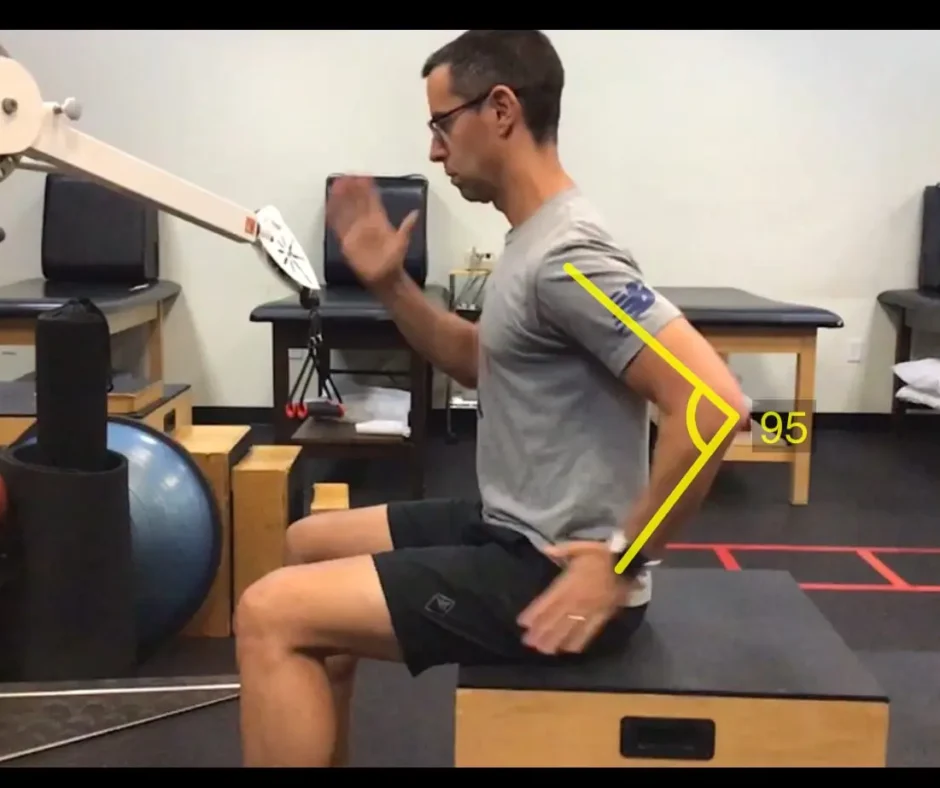
“Should I change my running form?” is an often-asked question. As we mentioned in an earlier post, we initially look at the mechanics of the lower body, considering hips, knees, feet and ankles during running gait. But we must consider posture and the upper body as well. In order to run efficiently, we must consider proper mechanics of the shoulders, elbows, wrist and hand.
If you were to listen to a trained track coach try to teach proper arm action to a runner, you might hear him use the following cues (link:RFF2000 Manual):
“Let the shoulder hang loose and relaxed.”
“Let the arms swing from the shoulders as one piece.”
“Hands cupped and relaxed.”
What does this mean? Each of these cues is meant to improve the efficiency of the upper body. Improved efficiency means that the runner will waste less energy during running. If a runner has a lot of motion in the transverse plane, that is, if they have a lot of rotational motion at the shoulders, he or she is probably not being as efficient as possible. That side-to-side swing takes extra energy from your body. Shrugging the shoulders while running has the same effect.
So how can a runner prevent the rotation of the shoulders? How can he decrease shoulder rotation and thereby improve efficiency? He should run with his arms bent at the elbow at about 90 degrees, with the entire arm moving as one piece. The hands should be relaxed and cupped, starting at hip height and coming up toward shoulder height.
How can you learn to do this? Track coaches use a drill with sprinters called “in-place arms” to teach this skill. Distance runners and field athletes can benefit from this drill, too. This drill can be introduced seated and progressed to include the lower body. The athlete drives the arms from “cheek to cheek” with proper mechanics– quickly!–two to four repetitions of 10 seconds. See below.
Your foot cadence is tied closely to the ability to swing the arms. Distance runners will benefit from using this drill in order to conserve energy and run farther with less wasted energy. Another bonus? Your race photos will look better!
Reference:
https://digital.la84.org/digital/collection/p17103coll14/id/1338/rec/3


